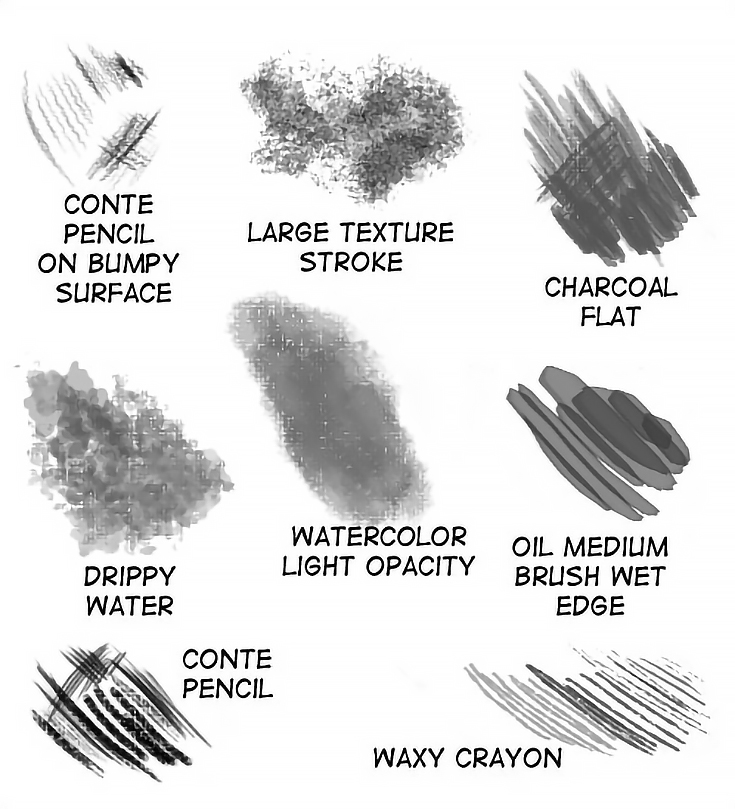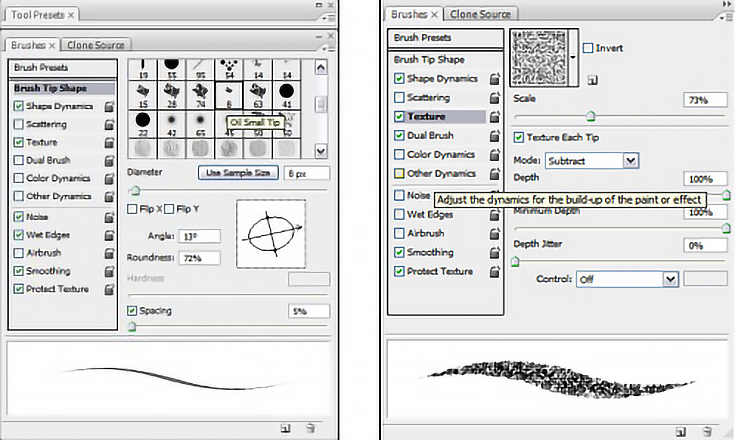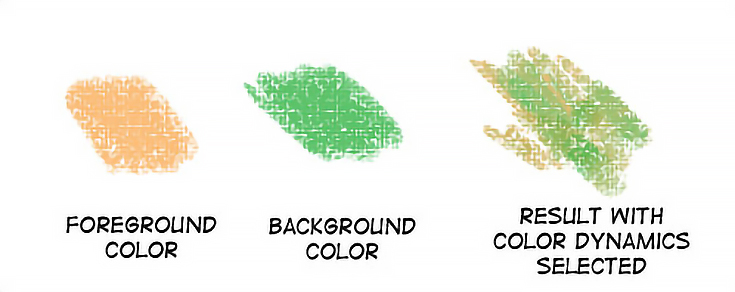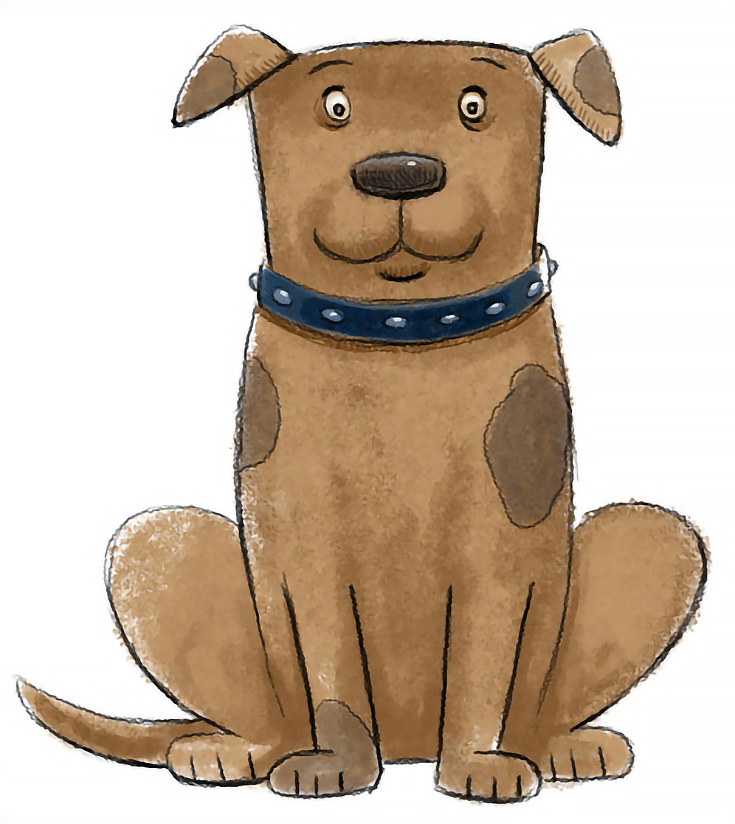The following tutorial covers some basic techniques you can use to create digital art that has the look and feel of traditional media.
1. Playing with Photoshop brush presets
You can make your own brushes, but Photoshop comes with some built in presets that already mimic natural media and are a good starting point. They are: Natural Media, Dry Media, and Wet Media.
(I use the brushes in these sets so often that I’ve loaded all three into my brush menu, then saved them as their own set.)
In this cat sketch, I’ve used the Conte Pencil on Bumpy Surface, Drippy Water and Large Texture Stroke brushes.
Here are those brushes by themselves, along with some of my other favorite Photoshop presets:
To change your brush, click on the the brush control menu under “window” or click the brush icon over in your Tool Presets.
These brush tool controls are incredibly powerful. You can change the size and shape of your brushes, adjust the your settings to tablet pressure or pen tilt, cause them to scatter as you draw, add texture, play with color and opacity dynamics and more.
2. Working with brush texture
For me, this is the single biggest secret in making natural looking media in Photoshop. You can make or use your own custom textures, but Photoshop has several built in presets. My favorites are the Artist Surfaces and other paper surfaces.
A quick note on the texture settings: Scale changes the size of the texture and Mode changes the amount of texture in your brush stroke.
I find that Subtract (pictured in the image up above, and to the right) tends to give you the most texture. Color Burn and Multiply are also good choices.
3. Using color dynamics
Color Dynamics is another great tool that gives your digital work a more traditional feel. Basically, by changing the dynamics you can take your foreground color and mixes it with your background color as you draw/paint.
What’s so awesome about this is that you can combine entirely different colors, or different shades of the same color, without having to go back and keep picking different colors with your eyedropper or selecting color by hand. (See example below).
Essentially, you’re mimicking a painter who has two colors going at the same time on a dirty brush. Using color dynamics with slightly different hues or values of the same color is also a great way to add a bit more life to your brushstrokes and colors with very little effort.
You can adjust how much your hue, saturation, brightness, and purity of color is affected. You can also set it to go crazy with mixing foreground and background—or, you can be more subtle. I like to control my color dynamics by pen pressure, but you can other ways of controlling it, too.
4. Learning layering techniques
By its nature, digital media is flat. To successfully mimic traditional media, you will need to create the illusion of a bumpy canvas or 3-D layers of paint on paint.
So when you’re working, don’t settle for just one of these effects discussed in this tutorial. Instead, use a variety of brushes, textures, and techniques on top of each other in the same piece to create interest and depth.
5. Don’t be perfect!
The final key in making your digital art look like traditional art is to be messy. Going for a traditional pencil sketch? Leave some of your lines sloppy, sketchy and light to simulate real pencil marks.
And remember, when you erase layers of pencils on real paper you can’t always get rid of them entirely. So you should leave a hint on your digital paper too. Erase in stages, with lower opacity.
If you’re going for acrylic or oils, steer clear of the overly smooth airbrushed look, and let the energy of your strokes show. Use texture if you want to create a dry brushed-looking top layer—or use color dynamics to get more mixed layers of ‘paint’ color.
Lastly, if you’re mimicking watercolor, let your ‘paint’ bleed a little bit outside the lines. And you never want to cover every inch of your work. Use the white of your canvas just as you would the white of your watercolor paper.
I hope these techniques prove to be helpful. Of course, the best advice I can give you is to experiment as much as possible and find which settings work best for you.
To read more articles by Karyn, please visit her website at KarynLewis.com.
This post may contain affiliate links.





